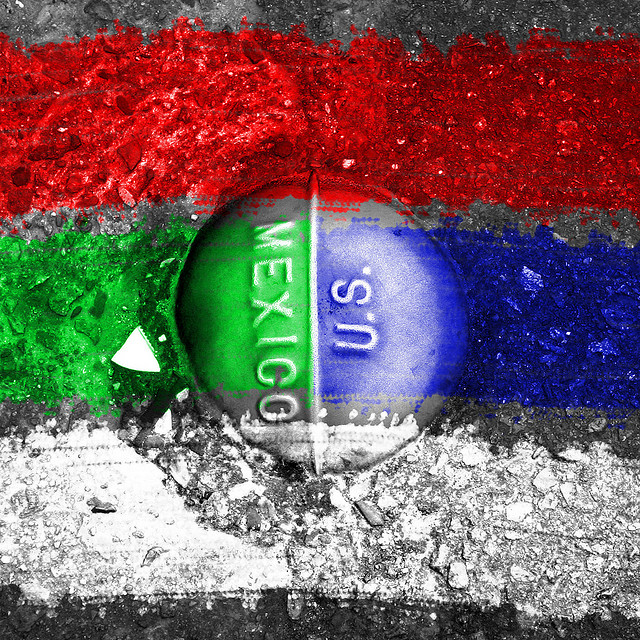From Jersey to Mexico – The Freedom of a Bi-cultural Life

![]() By Elizabeth Giadans, Latina Voices
By Elizabeth Giadans, Latina Voices
When I was younger, I never really wondered about my heritage. I felt I was simply myself, all I knew was life on the East Coast, in Passaic, New Jersey.
My parents are Mexican.
My father arrived in the 1980s but the rest of my immediate family and I lived in Passaic City in the early 1990s. I knew they were from Mexico City. We ate traditional Mexican food and we hardly ate meals away from home.
One day my father sat all of us down and explained a new house rule.
“I want us to speak in Spanish at home,” my father said.
My siblings and mother complied. I’m not sure if they were pleased. I spoke horrible Spanish.
I remember asking him “Why?”
“Why? So you don’t forget where your roots begin,” my father responded. “I want you to inherit pride in a culture that conserves a rich history. Speaking another language is something a person should never pass up.”
I learned the alphabet before starting pre-school. My mother bought me books to write in and practice my penmanship. She never taught me in Spanish. At the time she was learning English, so it is safe to assume she used this to her advantage as well.
I never questioned speaking English. It came naturally to me along with my two older siblings. We went to school with Polish-Americans and African-Americans kids. There weren’t many Mexican Americans, and only a few Domincans.
According to the 1980 Census, the Hispanic population in Passaic City was 17,933 people. In 1990, this number rose to 29,028. From 1990 to 2000, the Hispanic population experienced a significant 46 percent increase.
My father worked six days a week. He woke up at 5 a.m. and came home almost every night around midnight. Sundays were always reserved for family time.
In order to communicate with my family, I would have to speak in Spanish. I didn’t know proper verb tense or even how to pronounce the alphabet letters. My siblings were born in Mexico City and began their education in Mexico. So speaking in Spanish was easy for them, but not for me.
“You are American AND Mexican. Yes they are both different worlds. You will learn all about being American in school and with your friends, but you can also learn about being Mexican from us at home,” my father said.
As time went on, I felt a duality grow within me. I am supposed to be two things? When do I switch? What do I do? Is there an off or on button? I felt like as if both of my arms were being tugged in different directions. In the late 1990s we moved from New Jersey to New York City.
As the years went by, I was still confused but my Spanish improved. I spoke more confidently and even made jokes when I spoke in Spanish. Yet I still didn’t know anything about Mexico. I knew about the Hudson River, The Catskills, Battery Park, and the George Washington Bridge.
The number of people who are of Mexican origin and living in New York City has more than tripled from 1990 to the present, according to Census data. In 1990, the population of people of Mexican origin in New York City was 58,410, around 3.3 percent of the Hispanic community of more than 1.7 million. In 2010, the Mexican population was at 342,699, around 14 percent of the Latino population of 2,396,374.
According to a report titled, “The Latino Population of New York City, 1990-2010″ released in November 2011 by the Center for Latin American, Caribbean and Latino studies at CUNY, by 2021 Mexicans will become New York City’s largest Latino population.
My father moved back to Mexico City in 2007. I decided to visit him and thought this was a great opportunity to travel with someone I trusted to chaperone me.
Surprisingly, my first trip to Mexico was an eye-opener. Walking through the street markets, or tianguis as they call them in Mexico, I saw colorful artisanal works. There were endless stands that sold beautiful textiles and fabrics with bright hot pink, sky blue, violet and tangerine orange, with detailed floral embroidery, all distinct in their hand-stitched patterns made on looms. I bought myself a blue shawl with small tassels that hang at the edges.
I felt proud to have ties to a diverse culture with a rich history. I saw it in the people. Mexicans do not all look the same. Some are white, tanned and brown. I saw it in the architecture. I was astonished when I went to the museum Templo Mayor. The government still reserves what remains of Tenochtitlan.
Tenochtitlan was the capital city of the Aztec civilization, and now lies underneath the Zocalo (main public square) in Mexico City. Above the ruins, the Spanish conquest left many traces of Colonial architecture, including Catholic churches for generations to see. Never before had I seen a mix of different cultures fused into one.
During that trip I also learned about dialects of existing and surviving indigenous tribes.
Today my father says, “We [as people of Mexican heritage] should be cognizant and responsible in transmitting this identity of ‘Mexican-ness,’ just like other people. Just like Frida Kahlo and mariachi musicians. They are staples in Mexican culture and are easily identified in the world as such.”
I came to terms with myself and no longer feel a split. I learned it is all right to be a part of another culture and another identity. If anything, I now feel free. I can be what I want, when I want, and how I want — anywhere.
This article was originally published in Latina Voices.
 Elizabeth Giadans is a journalism student at Columbia College Chicago.
Elizabeth Giadans is a journalism student at Columbia College Chicago.

